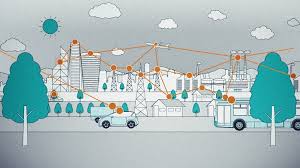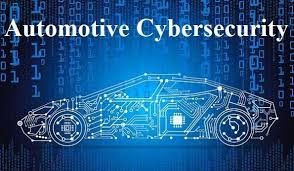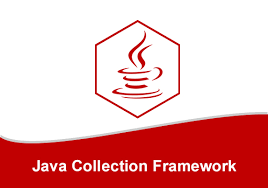Description
About the course
Professor Sudip Misra, a faculty from the department of computer science and engineering at Indian Institute of Technology, Kharagpur has designed this course on Wireless Ad Hoc and Sensor Networks from the very basic level. This course helps you to learn and understand the fundamentals of the two new fields which have recently appeared, namely mobile ad hoc networks and sensor networks. This course covers the details of MANET(Mobile Ad Hoc Network) which includes its introduction, Self-organizing behavior, Cooperation, MAC (Media Access Control), Routing, Multicast routing, Mobility model, Transport layer. It then covers Opportunistic Mobile Networks, UAV networks. Apart from that, it covers the Wireless Sensor Networks in detail including its introduction, Coverage, Topology management, Mobile Sensor Networks, MAC, Congestion control, Routing, Underwater WSN, Security, Structure of sensor nodes. This is completely an online course with worldwide accessibility.
Learning Outcomes
After completing this course, you will be able to:
- Understand and explain the concept of ad-hoc and sensor networks and their applications.
- Understand and explain the typical node and network architectures.
- Understand and explain protocol design issues (especially energy-efficiency).
- Understand and explain protocol designs for wireless sensor networks.
- Critique protocol designs in terms of their energy-efficiency.
- Design and implement sensor network protocols.
- Boost your hireability through innovative and independent learning.
Target Audience
The course can be taken by:
Students: All students from electronics and communication engineering domain.
Teachers/Faculties: All teachers/faculties from electronics and communication engineering domain.
Professionals: All working professionals from the domain of wireless communication technologies.
Why learn Wireless Ad Hoc and Sensor Networks?
Wireless communication technologies are undergoing rapid advancements. The last few years have experienced a steep growth in teaching and research in the areas of wireless ad hoc and sensor networks. These networks have emerged to be attractive in many civilian and military applications, and they hold great promises for our future. The wireless sensor network is not only a fascinating research topic but has a growing future in terms of employment especially with the advent of technologies like the Internet of Things.
Course Features
- 24X7 Access: You can view lectures as per your own convenience.
- Online lectures: 19 hours of online lectures with high-quality videos.
- Updated Quality content: Content is latest and gets updated regularly to meet the current industry demands.
Test & Evaluation
Each lecture will have a quiz containing a set of multiple choice questions. Apart from that, there will be a final test based on multiple choice questions.
Your evaluation will include the overall scores achieved in each lecture quiz and the final test.
Certification
This course is free and it has no certificate.
Topics to be covered
- WSN-Module-01:Introduction: Wireless Ad Hoc Networks- Part- I
- What are Wireless Ad-Hoc Networks?
- What are the general concepts in Wireless Ad-Hoc Networks and different enabling technologies?
- What are the different types of Wireless Ad-Hoc Networks?
- What are wireless mesh networks, examples of Ad Hoc networks, their constraints and implementing challenges?
- WSN-Module-02:Introduction: Wireless Ad Hoc Networks- Part- II
- What are Media and Energy Efficiency challenges in implementing Ad Hoc Networks?
- What are Cooperation, Misbehavior dealing and security challenges in implementing Ad Hoc Networks?
- What are Routing challenges and Its Different Solutions?
- What is Multicast Routing, Power management and TCP implementing challenges in Ad Hoc networks?
- WSN-Module-03: Self-organizing Behaviour of Wireless Ad Hoc Networks
- What is Self Organization Systems?
- How Self-Organization is different from Conventional Networking and what are the properties and basic principles of Self-Organization?
- Different Mechanisms of Self-Organization and Mechanisms for ensuring self-organization in MANETs
- What are the limitations of Self-Organizing Networks and what are Self Healing Systems?
- WSN-Module-04: Cooperation in Mobile Ad Hoc Networks- Part- I
- What are the characteristics and Challenges in MANETs?
- What are the different types of Node Behavior?
- How to deal with Misbehavior of nodes?
- What are the incentive mechanisms for countering misbehaviors?
- WSN-Module-05: Cooperation in Mobile Ad Hoc Networks- Part- II
- What is Nuglets System (Ex-Payment Systems)?
- What is Sprite Mechanism?
- What are the Reputation Systems and its types?
- WSN-Module-06: MAC Protocols in MANETs- Part- I
- What are MAC Protocols and it’s Challenges?
- What are the different types of MAC Protocols?
- What are Hidden and exposed terminal problems of using CSMA in MANETs?
- What is MACA Protocol?
- What is MACAW Protocol?
- WSN-Module-07: MAC Protocols in MANETs- Part- II
- What is DBTMA Protocol?
- What is MARCH Protocols?
- WSN-Module-08: Routing in MANETs- Part- I
- How communications take place between wireless Mobile nodes?
- What are Routing challenges in MANETs?
- What are the expected properties out of a routing protocol?
- What are the Different types of Protocols?
- What is Proactive-DSDV Routing Protocol?
- WSN-Module-09: Routing in MANETs- Part- II
- What is Proactive-Wireless Routing Protocol (WRP) and Proactive-Fisheye State Routing Protocol (FSR)?
- What is Proactive-Optimized Link State Routing Protocol (OLSR)?
- What is Reactive-Dynamic Source Routing Protocol (DSR)?
- WSN-Module-10: Routing in MANETs- Part- III
- What is Reactive-Ad Hoc On-Demand Distance Vector Routing protocol (AODV)?
- What is Hybrid-Adaptive Distance Vector Routing protocol (ADV)?
- What are Hybrid-ZRP and SHARP Routing protocol?
- What are the factors affecting the performance evaluation?
- WSN-Module-11: Multicasting in MANETs
- What are the different methods for Transmitting a Message?
- What is the advantage of Multicast over Broadcast and what is Multicast problem, challenges and its solutions?
- How are multicast routing protocols classified?
- What is an on-demand Miscasting Routing Protocol?
- What are MOLSR and MAODV protocol?
- WSN-Module-12: Mobility Models for MANETs
- What are the Mobility Models?
- How Are Mobility Models classified?
- What are the different examples of mobility models?
- WSN-Module-13: Transport Protocols for MANETs- Part- I
- What is Transmission Control Protocol?
- What is the problem of using TCP in MANETs?
- What are the design goals of TCP in MANET?
- What are the different transport protocols for MANETs?
- WSN-Module-14: Transport Protocols for MANETs- Part- II
- What is TCP with ELFN Protocols?
- What are Ad Hoc TCP (ATCP) Protocols?
- What is TCP-Bus Protocol?
- WSN-Module-15: Opportunistic Mobile Networks- Part- I
- What is Challenged Network?
- What are Delay Tolerant Networks (DTN) and its Sub-classes?
- What are the different challenging issues in OMNs and How OMNs differ from other networks?
- How is routing in OMNs done?
- What are the cooperation in OMNs and its example?
- WSN-Module-16: Opportunistic Mobile Networks- Part- II
- What is reputation/trust management and what are the characteristics of Human Mobility?
- Truncated Levy Walk Mobility Model with the example
- How to Simulate OMNs and what are Mission-Oriented Opportunistic Networks (MOON) and Mission-Oriented WSNs?
- WSN-Module-17: Opportunistic Mobile Networks- Part- III
- How Can MOONs explore Human Intelligence Level?
- What is heterogeneity in MOONs, its routing incompatibilities and social impacts?
- WSN-Module-18: UAV Networks- Part- I
- What are Aerial Systems and its actions?
- What are Unmanned Aerial Vehicles (UAV) and UAV networks?
- What are the different challenges and issue in implementing UAV Networks?
- What is the difference between MANET, VANET and UAV Network?
- What are Multi-UAV Network and UAV Network topologies?
- WSN-Module-19: UAV Networks- Part- II
- What are the different features of UAV Topologies and categories of UAV Networks?
- What are Flying Ad Hoc Networks (FANETs) and what has Distributed Gateway Selection?
- What is the Layered structure of FANETs and VANETs and how to Improve Throughput?
- WSN-Module-20: UAV Networks- Part- III
- What are Handover and its types in UAV Networks?
- What are Self-organizing UAV Networks and Self Organizing FANETs?
- Why use SDN in UAV Networks?
- What are the different UAV Networks Protocols?
- WSN-Module-21: Introduction: Wireless Sensor Networks- Part- I
- What are Wireless Sensor Networks (WSNs)?
- What is a Sensor node, its components and applications?
- Example of Sensor Network and different challenges of implementing of Sensor Networks
- What is the Sensor Web and its different components and why Cooperation is required in Sensor Networks?
- What are the different types of Node Behavior and what is the Topology and Self-management of WSNs?
- WSN-Module-22: Introduction: Wireless Sensor Networks- Part- II
- How Can the Social network be integrated with WSNs?
- How are WSNs used in Mines?
- What is the use of WSNs in Wildlife and Healthcare?
- Hos WSNs are used in Target Tracking and Agriculture?
- What is the use of WSNs in Multimedia and Nano-Networks?
- WSN-Module-23:WSN Coverage & Placement- Part-I
- Why is coverage the main issue in WSNs?
- What are the Objectives of Coverage Problem?
- What are the different types of Coverage problems?
- How the maintenance of Coverage is done and what is OGDC coverage algorithm?
- WSN-Module-24:WSN Coverage & Placement- Part-II
- What is the problem of Sensor Placement?
- What are the solutions for Placement problems?
- What are the Motivations of Formulation Problem, why the use of Mobile Sensor is important and what is Threat-based mobile Coverage Algorithm?
- WSN-Module-25: Topology Mangement in Wireless Sensor Network
- How to Manage the topology of WSN?
- What is the Topology Discovery Algorithm?
- What is the Sleep Cycle Management Algorithm?
- What is Clustering Algorithms?
- WSN-Module-26: Mobile Wireless Sensor Networks
- What are Stationary WSNs?
- What is Mobile Wireless Sensor Networks (MWSN) and it’s Components?
- What are the different types of MWSNs?
- What is Human-Centric Sensing?
- What are Delay Tolerant Networks and its examples?
- WSN-Module-27: Medium Access Control in Wireless Networks- Part-I
- How are the MAC protocols classified?
- Why is MAC protocol used in WSNs?
- What is the Energy Efficiency issue in WSN and what are the different issues with respect to MAC protocol design?
- What are the different MAC Protocols for Sensor Networks?
- WSN-Module-28: Medium Access Control in Wireless Networks- Part-II
- What is SMAC Protocol?
- How the SMAC Protocol works and what are its advantages, disadvantages and variants?
- WSN-Module-29: Routing in Wireless Sensor Networks- Part- I
- What is the Issue of transferring of information in the sensor network and what is Unit Disk Graph Model?
- How Multi-hop communication takes place in Sensor network, how routing is performed and what are the issues with the adoption of ad hoc routing protocols?
- What is Data-Centric Routing?
- WSN-Module-30: Routing in Wireless Sensor Networks- Part- II
- What is Greedy position Based Localized Routing?
- What is Data Aggregation with example and what are Clustering algorithms?
- WSN-Module-31: Congestion and Flow Control- Part- I
- What is Network congestion and what are the main sources of Congestion?
- What is required to analyze the different issues with congestion?
- What are the protocols proposed for WSNs to control Congestion?
- What is Congestion Detection and Avoidance (CODA) Protocol?
- WSN-Module-32: Congestion and Flow Control- Part- II
- What is Pump Slowly Fetch Quickly (PSFQ) Protocol?
- What is Rate-Controlled Reliable Transport (RCRT) Protocol?
- WSN-Module-33: Underwater Sensor Networks- Part- I
- What is Underwater Sensor Network?
- What are the advantages of UWSNs and how UWSNs are different from Terrestrial WSNs?
- What are the different applications of USNs and what are the different components of USNs?
- What are the different Research challenges in implementing USNs?
- What are the properties of Seawater, its effects and what is Network Topology and Localization?
- WSN-Module-34: Underwater Sensor Networks- Part- II
- How is UWSN deployed?
- What are the different types of UWSN deployment?
- WSN-Module-35: Underwater Sensor Networks- Part- III
- What is the architecture of UWSN?
- What is the Energy efficiency issue in implementing UWSNs and what Topology management is proposed for UWSN?
- What is MAC protocol and how routing is done in UWSN?
- WSN-Module-36: Underwater Sensor Networks- Part- IV
- What is Localization, what are the underwater environment challenges and what are the characteristics of the underwater acoustic channel?
- How is localization classified for the underwater environment?
- What are the different Mobility Models for movement of the different node in Ocean?
- WSN-Module-37: Security of Wireless Sensor Networks- Part- I
- What are the important security requirements in WSNs and their importance?
- What is the Security mechanism and what are the limitations of WSNs?
- What are the Security requirements in WSNs?
- What are the different types of attacks in WNs (part-1)?
- WSN-Module-38: Security of Wireless Sensor Networks- Part- II
- What are the different types of attacks in WNs (part-2)?
- What are the different security issues in WSNs and What are the Security protocols for WSNs?
- WSN-Module-39: Hardware Design of Sensor Node
- What is Wireless Sensor Node, its characteristics and requirements and what is the architecture of the sensor node?
- What is the functional Component of Sensor Node?
- What is SWAN Sensor Node?
- WSN-Module-40: Real Life Deployment of WSN
- How to develop Sensor Based Networking System for Improved Water Management for Irrigated Crops?
- How to develop Agricultural instruction detection using sensor networks?
- Wireless Ad Hoc and Sensor Networks - Final Quiz
Note : Parts of this material has been sourced from NPTEL, adapted and modified to adhere to our Pedagogical requirements and uploaded to YouTube for reuse under the same license.





Reviews
There are no reviews yet.